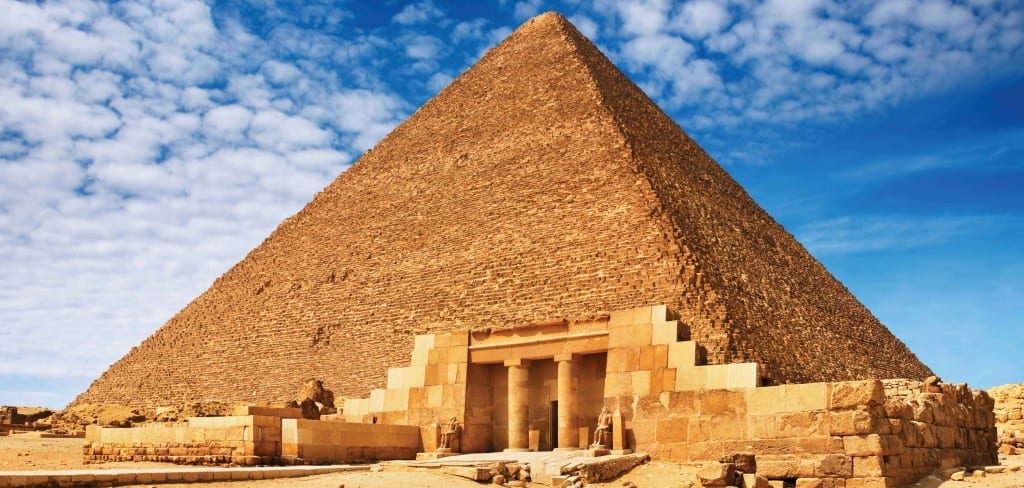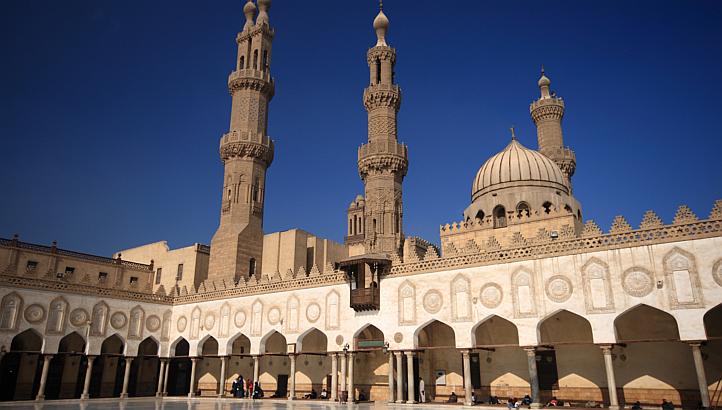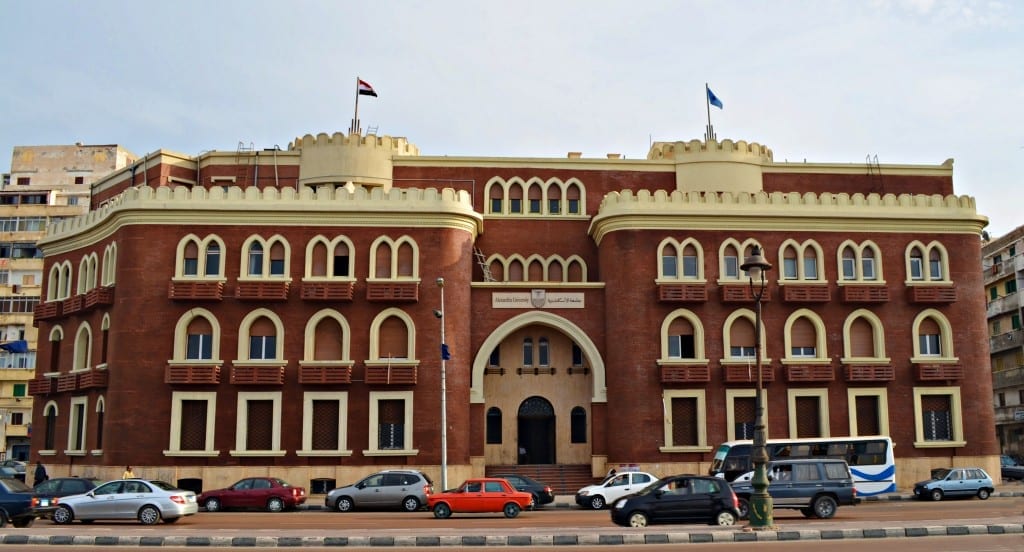Egypt, the most populous country in the Arab world, claims one of the world’s oldest cultures, descending from an ancient civilization that emerged in the 10th millennium BCE.
Widespread Middle East unrest in 2011 loosed grievances against the 30-year autocratic rule of President Hosni Mubarak, who was ousted following a dramatic period of protest that became a watershed moment in the Arab Spring. This upheaval paved the way for the country’s first free parliamentary elections, in which the Muslim Brotherhood leader Mohamed Morsi was elected president. Subsequent protests against Morsi’s authoritarianism led to a 2013 military coup d’etat and the election of former general Abdel Fattah el-Sisi as president in 2014.
Learn more about Egypt. Scroll below to view our archive of articles and chronology of latest news.
Why study in Egypt?
The relatively low cost of living is certainly a major factor for students thinking of studying in Egypt. Cairo recieved the highest score for ‘affordability’ in the 2012 QS Best Student Cities, with only Mexico City coming close in this respect. But, while costs are an increasingly important issue for many students, there’s more to Egypt’s appeal as a destination for higher education – including five universities in the 2014/15 QS World University Rankings.
For many international students, studying in Egypt is also a chance to explore a culture very different to their own, and indeed unlike any other. Bridging north-east Africa and the Middle Eastern region, and with a Mediterranean coastline, Egypt offers a unique fusion of African, Arabic and Mediterranean cultures. This is of course also the home of some of the world’s most renowned historic sites, including the Great Pyramids, the Temples of Karnak and the Valley of the Kings. Then there’s the appeal of cruises on the Nile, sunbathing by the Mediterranean and Red Seas, and the vibrant urban centre that is Cairo itself.
Education
The government has identified higher education as a priority, and is enacting a series of programs designed to make universities in Egypt more internationally competitive. Egypt currently has 20 public universities (with about two million students) and 23 private universities (60,000 students).
American University in Cairo
 Founded in 1919, The American University in Cairo (AUC) has become an essential contributor to the intellectual, cultural and social life of Egypt. AUC has nearly 35,000 active alumni. Currently, some 6,500 students are enrolled in 36 undergraduate, 44 master’s, and two doctoral programs. More than 16,000 students enroll each year in non-credit courses offered through AUC’s School of Continuing Education. AUC maintains two campuses: its environmentally-conscious main campus in the suburbs of Cairo and its historical campus in downtown Cairo. AUC emphasizes research and innovation grounded in the liberal arts, and all undergraduate students study a common set of courses in the humanities and the natural and social sciences as part of the university’s Core Curriculum. AUC is strongly committed to excellence, diversity, lifelong learning, social responsibility, and integrity in its programs and services. AUC degrees are accredited by the Middle States Commission on Higher Education in the US and by the National Authority for Quality Assurance and Assessment of Education (NAQAAE) in Egypt, and many of its programs have specialized accreditation. The university is ranked among the top 450 universities worldwide, according to the London-based Quacquarelli Symonds (QS).
Founded in 1919, The American University in Cairo (AUC) has become an essential contributor to the intellectual, cultural and social life of Egypt. AUC has nearly 35,000 active alumni. Currently, some 6,500 students are enrolled in 36 undergraduate, 44 master’s, and two doctoral programs. More than 16,000 students enroll each year in non-credit courses offered through AUC’s School of Continuing Education. AUC maintains two campuses: its environmentally-conscious main campus in the suburbs of Cairo and its historical campus in downtown Cairo. AUC emphasizes research and innovation grounded in the liberal arts, and all undergraduate students study a common set of courses in the humanities and the natural and social sciences as part of the university’s Core Curriculum. AUC is strongly committed to excellence, diversity, lifelong learning, social responsibility, and integrity in its programs and services. AUC degrees are accredited by the Middle States Commission on Higher Education in the US and by the National Authority for Quality Assurance and Assessment of Education (NAQAAE) in Egypt, and many of its programs have specialized accreditation. The university is ranked among the top 450 universities worldwide, according to the London-based Quacquarelli Symonds (QS).Cairo University
 Cairo University has successfully been undertaking its mission of delivering education, research and cultural duties over the years. It is considered as the mother university among other younger universities in Egypt. Cairo University is also offering its education and research facilities to Arab and foreign students and scientists and has become well known world wide. Cairo University is a comprehensive institution of higher learning located in Giza, Egypt. CU is committed to preparing students for the challenges of rapidly changing workplace. Through interactive learning and information technologies, our graduates enter the work force with the skills needed to succeed in today’s global marketplaces. Cairo University was established in 1908; currently it has 26 faculties/institutions in different scientific disciplines, with total volume of about 250000 students. Mission statement: Enhance university capabilities and potentialities through developing its human and financial resources, as well as improve the academic abilities of its staff members and their assistants, in order to prepare them for the age of science and technological revolution. In this respect, the university has adapted unconventional methods to develop the system of academic research in order to meet the needs of society and research and to encourage its scholars and researchers.
Cairo University has successfully been undertaking its mission of delivering education, research and cultural duties over the years. It is considered as the mother university among other younger universities in Egypt. Cairo University is also offering its education and research facilities to Arab and foreign students and scientists and has become well known world wide. Cairo University is a comprehensive institution of higher learning located in Giza, Egypt. CU is committed to preparing students for the challenges of rapidly changing workplace. Through interactive learning and information technologies, our graduates enter the work force with the skills needed to succeed in today’s global marketplaces. Cairo University was established in 1908; currently it has 26 faculties/institutions in different scientific disciplines, with total volume of about 250000 students. Mission statement: Enhance university capabilities and potentialities through developing its human and financial resources, as well as improve the academic abilities of its staff members and their assistants, in order to prepare them for the age of science and technological revolution. In this respect, the university has adapted unconventional methods to develop the system of academic research in order to meet the needs of society and research and to encourage its scholars and researchers.Ain Shams University

Ain Shams University, as the third Egyptian university, was founded in July 1950 under the name of “Ibrahim Pasha University”. It participated with the two earlier universities, “Cairo University” (Fua’d the 1st ) and “Alexandria University” (Farouk the 1st) in fulfilling the message of universities and meeting the increasing demand of youth for higher education. When it was first established, Ain Shams University comprised a number of distinguished faculties and academic institutes, which were later developed into university.After the revolution of the 23 rd of July 1952, it was suggested that Egyptian universities be given names that were strongly linked with the roots and historical landmarks of the country. Thus on 21 st of February, 1954 the name of the university was changed to “Heliopolis”, and then changed in the same year to its present name “Ain Shams”, the Arabic for “Heliopolis”, or “O’n”, which was the oldest university in history. “O’n” University was established about 5000 years ago, and it had a wide fame as a center of knowledge and learning, especially in astronomy, engineering and medicine. Perhaps a perfect example of the knowledge and skill of “O’n” teachers is Imhotep, the chief priest, minister, and architect, who in 2700 B.C. designed the first large structure of stone known in history, Zoser’s Step Pyramid in Sakkara. Westcar Papyrus also states that the founder of the Fifth Dynasty was the Rector of “O’n” University before ascending the throne. However, the most important achievement of “O’n” University was the call for worshipping a single deity, the solar disk of Aton, at the hands of Akhenaton, who was influenced by the ideas of “O’n” priests.
The emblem of the university, the obelisk and two hawks, establishes a link between the name and the ancient history of the university. The obelisk stands for the house of life at the city of “O’n”, whereas the two hawks are symbolic of Horus, the Egyptian god at that time.
The university is now located in the area of the Zaafaran Palace, built during the regime of Khedive Ismail. The Palace was so named because the area surrounding it was famous for saffron (in Arabic Zaafaran) plantations. The Palace was used to host the administration offices of the Egyptian University when it was established in 1925. It was used by the Ministry of Foreign Affairs (as a guest house) for accommodating important visitors. The palace also witnessed the signing of the 1936 Treaty between Egypt and Great Britain. Finally in 1952, it came to be used as the administrative headquarters of Ain Shams University.
Being a major scientific and cultural institution, Ain Shams University is fully aware of these challenges and is certain that it has – with other Egyptian Universities – a difficult hard responsibility for the creation of the generation. That is aware and proud of its identity and traditions and is also ready for the creation of a better future for their country. In fact, Ain Shams University has played an undeniable role in developing the cultural and scientific life in Egypt and enriching human knowledge in general.
The university includes 15 faculties and 2 high institutes. In 1950, there were only eight faculties: faculty of Arts, faculty of law, faculty of Commerce, faculty of Science, faculty of Engineering, faculty of Medicine, faculty of Agriculture, and Women’s college. In 1969, the faculty of Education, known since 1880 as Teachers’ college, became the ninth faculty in the university. In 1973 the faculty of Al-Alsun was made the tenth member in the university. However, the history of this faculty dates back to 1835.
In 1994, a decree was issued for the establishment of two more faculties; the faculty of Pharmacy and the faculty of Dentistry, the actual study was started the following year in both faculties. In the same year, it was decided to establish the faculty of Computers and Information Sciences, and the study started the following year. The last faculty to join the university is the faculty of Specific Education, in 1998. Faculty of Nursing was established in 1980, and the Institute of Childhood Postgraduates Studies was established in 1981. The establishment of the Institute of Environmental Research and Studies was at 1982.
Ain Shams University comprises seven campuses, all of which are sited in Great Cairo. The university administration, faculties of Arts, Law and Science are all located in the main campus, El-khalifa El Mamoon Street, Abassia. The faculties of Commerce, Al-Alsun (languages), Pharmacy, Dentistry, Computer and Information Sciences, Institute of Postgraduate Childhood and Institute of Environmental Studies and Research, together with the specialized Hospital are located on the second campus on the other side of the aforementioned street. Faculty of Medicine and Faculty of Nursing together with the university hospitals are located in another campus at Abassia. Faculties of Engineering, Specific Education, Education, Women and Agriculture are located each on a separate campus in Abassia, Heliopolis and Shoubra El-Kheima, respectively.
Al-Azhar University
 Arabic Jāmiʿat al-Azhar, chief centre of Islamic and Arabic learning in the world, centred on the mosque of that name in the medieval quarter of Cairo, Egypt. It was founded by the Shīʿite (specifically, the Ismāʿīlī sect)Fāṭimids in 970 ce and was formally organized by 988. Its name may allude toFāṭimah, the Prophet’s daughter, known as “al-Zahrāʾ” (“the Luminous”), from whom the Fāṭimid dynasty derives its name. The format of education at al-Azhar remained relatively informal for much of its early history: initially there were no entrance requirements, no formal curriculum, and no degrees. The basic program of studies was—and still is—Islamic law, theology, and the Arabic language.
Arabic Jāmiʿat al-Azhar, chief centre of Islamic and Arabic learning in the world, centred on the mosque of that name in the medieval quarter of Cairo, Egypt. It was founded by the Shīʿite (specifically, the Ismāʿīlī sect)Fāṭimids in 970 ce and was formally organized by 988. Its name may allude toFāṭimah, the Prophet’s daughter, known as “al-Zahrāʾ” (“the Luminous”), from whom the Fāṭimid dynasty derives its name. The format of education at al-Azhar remained relatively informal for much of its early history: initially there were no entrance requirements, no formal curriculum, and no degrees. The basic program of studies was—and still is—Islamic law, theology, and the Arabic language.An Ismāʿīlī centre of learning, al-Azhar fell into eclipse after Egypt’s conquer bySaladin, founder of the Ayyūbid dynasty and a Sunni, in the second half of the 12th century. It was revived under the Mamlūks (1250–1517), however, and continued to thrive thereafter as a centre of Sunni scholarship. It was damaged in an earthquake in the early 1300s and subsequently repaired, and additions, alterations, and renovations to its structures were undertaken at various points throughout the 14th and 15th centuries, particularly in the later Mamlūk period, when it came under direct patronage.
With the defeat of the Mamlūks in 1517, substantial architectural projects were few until the mid-18th century; in spite of this, al-Azhar’s significance continued, and under Ottoman rule it held preeminent status among Egyptian institutions of learning. Opposition to the French in the late 18th century led to an uprising in 1798 centred on al-Azhar, and as a result it was bombarded by the French and temporarily closed. Nineteenth-century reform at al-Azhar owed in part to the involvement of a number of individuals, including Jamāl al-Dīn al-Afghānī, who taught at al-Azhar in the 1870s and emphasized that modern science and other subjects were not incompatible with the Qurʾān, and Muḥammad ʿAbduh, who was influenced as a young intellectual by al-Afghānī and later proposed, as a member of a government committee, a number of broad measures for reforming al-Azhar. In the late 19th century, procedures, including admission requirements and examinations, were formalized, and a number of modern subjects—some of them obligatory—were introduced.
Al-Azhar was nationalized and again underwent substantial reforms in the early 1960s. Since that time, faculties such as those of medicine and engineering have been established; women were first admitted in 1962. The modern university offers a number of faculties, some of them for women, as well as regional facilities.
Alexandria University

In 1938, the nucleus of the Alexandria University had its beginning in the form of two satellite faculties of Fouad the First University. These were the faculties of Arts and Law. The faculty of Engineering was then established in 1941. In the light of the need for developing more disciplines for higher learning and with a view towards meeting the need of the people of Alexandria, Alexandria University, formerly known as Farouk University, became a separate entity in August 1942 with four additional faculties: Science, Commerce, Medicine and Agriculture. In 1952, it became “Alexandria University”. Since then, the University witnessed growth and expansion in several fields: the number of Faculties and high institutes increased to 30. Some example of them are as follows: Faculty of Nursing, 1954 (formerly, High Institute of Nursing) Faculty of Pharmacy, 1956 High Institute of Public Health, 1963 Faculty of Education, 1969 Faculty of Dentistry, 1971 Medical Research Institute, 1971 Faculty of Veterinary Medicine, 1974 Institute of Graduate Studies & Research, 1983 Faculty of Tourism and Hotels, 1983 Alexandria University supervised the establishment of four satellite faculties in the Nile Delta.





